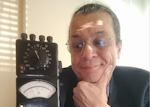RF Timing Solution Enhances Wireless Infrastructures
Check out our Design Automation Conference 2023 coverage. This article is also part of the TechXchange: It's About Time.
SiTime released the Elite RF precision timing platform, intended to enhance the timing architecture in wireless infrastructures. Like all members of the new class of MEMS-based temperature-compensated crystal oscillators (TCXOs), its Elite RF Super-TCXO is purpose-built to withstand extreme environments in which 5G radios are deployed, while delivering the phase noise, accuracy, and resilience demanded by the application.
The single, highly integrated device also meets the performance requirements specified by the IEEE 1588v2 timing synchronization protocol. Offering a higher reliability than legacy mini oven-controlled crystal oscillators (OCXOs), the Elite RF Super-TCXO provides a reliable timing platform, consuming less power and board space, without additional components like jitter cleaners and VCXOs for generating RF-capable clocks.
“To enable new services, radios are expected to deliver 10X the bandwidth of previous generations with significantly lower latency,” said Piyush Sevalia, executive VP of marketing, SiTime. “To achieve these performance goals, next-gen radios must be deployed closer to the user, and all nodes in the network must be time-synchronized. Past radio architectures used separate timing devices for the radio and for synchronization. The SiTime Elite RF platform integrates these two clocking functions, simplifying the radio timing architecture and delivering on the promise of 5G bandwidth and coverage.”
TCXO Specs and Features
The SiT5376 and the SiT5377 are ±100-ppb precision MEMS Super-TCXOs with an output that can be digitally pulled by up to ±400 ppm with a resolution of ±0.05 ppt. Both can be factory-programmed to any combination of frequency, voltage, and pull range; are compliant to the GR-1244 Stratum 3 oscillator specifications; and use the company's DualMEMS and TurboCompensation temperature-sensing technology for stable timing in the presence of environmental stressors, including (EMI).
Features include a frequency output from 1 to 220 MHz, ±100-ppb stability over the –40 to +105°C operating temperature range with ±0.9 ppb/°C stability over the temperature slope, and ±400-ppm digital control with ±0.05-ppt (parts per trillion) resolution. Typical integrated phase jitter is 100 fs (19.2 MHz, 12-kHz to 20-MHz integration range), with 0.3 ppb/day typical daily aging. Housed in 5.0- × 3.5-mm ceramic packages, they have a power consumption of 144 mW at 1.8 V.
Check out more of our Design Automation Conference 2023 coverage, and more articles in the TechXchange: It's About Time.

